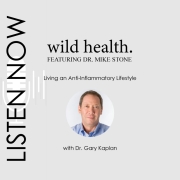Anyone can be at risk of being exposed to and affected by harmful toxins. Exposure can occur in your own home, at work, or while traveling. The good news is that for most people the liver is able to break down these toxins so they can pass through the intestines and be excreted from the body. However, approximately 20 percent of the general population lacks the enzymes needed to break down toxins for elimination, leaving this group particularly vulnerable. Instead of being excreted, harmful toxins can be reabsorbed through the lining of the intestines back into the body. The body then sequesters them wherever it can, damaging the muscle tissue, nerves, and nervous tissues in those “holding areas.”
You can be exposed to toxins in the following ways:
- By ingesting contaminated food, beverages, and water.
- By inhaling aerosolized particles in the air.
- Through direct contact with mucus from eyes, nose, mouth, etc…
- Through direct contact with the skin
Not all toxins are the same
Biotoxins
Biotoxins are toxic substances from biological sources, like plants, bacteria, molds, and animals that alter the body’s normal biological systems that manage digestion, respiration, circulation, joint flexibility, etc. When this happens the resulting condition is called biotoxicity.
Neurotoxins
Neurotoxins affect the nervous system and disrupt the normal functioning of neurons, key cells that transmit and process signals in the brain and other parts of the nervous system. This is called neurotoxicity.
Neurotoxins can be of natural or manmade origin. For example, neurotoxins can be found in molds, heavy metals (lead, mercury), and insect bites, as well as in pesticides, food preservatives (aspartame), and substances used in chemotherapy, radiation treatments, and drug therapy, among other things.
Mycotoxins
Mycotoxins are a type of biotoxin and the byproducts of fungi (molds) that can have toxic effects on humans and animals. Aspergillus, Penicillium, Stachybotrys, and Fusarium are some of the more common fungi that produce the following toxic offspring: Aflatoxins, Gliotoxins, Ochratoxins, and Trichothecenes.
Mycotoxins are primarily found in:
- Structures: In water-damaged homes and buildings
- Food: Common contaminants of human food products, like wine, coffee beans, nuts, cereal grains (wheat, corn, barley, etc…) and animal feed. They can also enter the food chain through food products, such as milk, meat, and eggs, obtained from animals that are fed mycotoxin-contaminated feed.
Health effects of mold toxicity
Mycotoxins and leaky gut
The job of the small intestine is to allow nutrients to pass through its lining so they can be absorbed into the bloodstream and circulated to all the major organs. But it also works as a filter to prevent foreign or toxic substances from entering the bloodstream. When there is damage to the lining and foreign substances are able to penetrate this is called leaky gut or intestinal permeability. Since we now know that 70-80% of our immune system is located in our gut it is not surprising that the effects of leaky gut can be serious.
Researchers investigated the presence of mycotoxins in the gastrointestinal tract and concluded that Candida Albicans, one of the pathogenic fungi residing in the intestines, harmless in small amounts, starts producing gliotoxins if its number outgrows the other beneficial bacterial species in the gut, causing a myriad of neurological and gastrointestinal symptoms. Exposure to Candida Albicans and other mycotoxins results in:
- Disrupting intestinal integrity causing dysbiosis (imbalance in gut bacteria) or leaky gut
- Disrupting the microbiome
- Suppressing the local immune response in the intestines
Neurocognitive symptoms
In the brain, the glial cells (microglia and astrocytes) are part of an interactive network of cells that work to protect the nerves and brain from damage and ensure their proper development. Research shows that exposure to mycotoxins can suppress and impair their proper functioning, putting an individual’s cognitive development and/or function at risk.
A research study that measured IQ scores in 277 six-year-old children, who were exposed to indoor mold for more than 2 years, showed IQ deficits of approximately 10 points using a scale of intelligence, exemplifying the dangers of exposure on cognitive development in early childhood.
Other classic neurologic disorders that result from mycotoxin exposure include pain syndromes and depression, movement disorders, delirium, dementia, and balance and coordination disorders.
Mold toxicity is one of the major toxicity conditions we see at the Kaplan Center. Over the years we have gained a better understanding of the pathophysiology, or disease process, of environmental toxicity and have developed a successful treatment protocol. We have been delighted to see an extraordinary resolution of symptoms in about 50 percent of patients, and notable improvement in another 40 percent. Obviously, the protocol is not a cure-all, but it has helped a number of patients feel significantly better.
 What Are Common Symptoms of Toxicity Disorders?
What Are Common Symptoms of Toxicity Disorders?
The following is a list of symptoms that may indicate the presence of biotoxins or neurotoxins in your body:
– Joint Pain – Muscle Pain – Chronic Headaches
– Fatigue – Digestive Problems – Decreased Ability to Focus
– Sleep Problems – Decreased Libido – Weight gain / Obesity
– Depression – Anxiety – Mood Swings
– Poor Memory – Irritability – Wheezing
Are the Symptoms of Biotoxicity & Neurotoxicity Similar to Those of Other Disease Conditions?
Yes. Because the symptoms of biotoxicity and neurotoxicity are similar to those of other diseases, toxicity disorders are often overlooked as the underlying cause of illness.
Can I Be Tested for Biotoxicity or Neurotoxicity?
If you are experiencing any of the symptoms listed above, and, especially if your condition has not responded to conventional medical treatment, the Kaplan Center recommends the following steps:
- (And most important!) Take the time to talk with your doctor about your history of exposure to environmental toxins.
- Take an On-line Visual Contrast Sensitivity Test (VCS). This non-invasive test is a sensitive indicator of your exposure to a variety of toxins. There are a number of online resources that offer this test for a small fee.
- Undergo genetic testing (HLA-testing) to determine if your body has the enzymes necessary to breakdown biotoxins.
- Undergo advanced testing. There are a variety of tests that can detect the presence of toxins (including mycotoxins, heavy metals, infectious sources, food additives, pesticides, and other toxic chemicals). Talk to your physician about which test(s) may be most appropriate for you, based on your history of exposure
- Test for leaky gut. When the protective filtering system within the intestines is compromised, it is known as Intestinal Permeability – or leaky gut. Toxins and other substances that would normally have been kept within the gastrointestinal (GI) tract and eliminated are now able to get into the bloodstream and circulate throughout the body.
Treating Biotoxicity and Neurotoxicity
There are a variety of treatments available to patients suffering from biotoxicity or neurotoxicity disorders. If the underlying cause of your pain or illness is biotoxicity or neurotoxicity, your treatment plan must include a detoxification regime, or your overall recovery is likely to be incomplete and slower than it needs to be.
Your treatment plan should be individually tailored after consideration of your overall medical history, your current symptoms, your genetic makeup, your history of exposure to toxins, and your lifestyle.
In essence, a detoxification regime is designed to “draw out” toxins from whichever tissue they have been stored and “bind” the toxins at the molecular level so they can finally be eliminated from the body; this is typically done with binders and anti-fungal medications.
We also prescribe dietary changes, such as Detox Food Plans, and nutritional supplements including Glutathione, Activated Charcoal, Omega-3 Fatty Acids, Chlorella, Vitamin D, Magnesium, and Probiotics. Before purchasing any over-the-counter nutritional supplements or herbal remedies, it is important to note that:
- The quality and efficacy of nutritional supplements can vary widely depending upon the manufacturer and the dosage consumed.
- Supplements can interact with other prescription medications, enhancing or undermining the effectiveness of your other medications or even creating new and unexpected problems.
The Kaplan Center medical team also offers integrative therapies, such as:
These alternative modalities can provide patients with significant relief from their symptoms and from any side effects of the detoxification process.
What Can I Do Now to Protect Myself and My Loved Ones from Biotoxicity and Neurotoxicity?
The MOST important thing you can do to improve your health and wellbeing is to limit your environmental exposure to toxins by:
- Making sure there is no hidden mold in your home (watch this video featuring David Young MPH, an Indoor Health Specialist, for tips on how to keep a healthy environment);
- Avoiding high processed foods that contribute to leaky gut – a disruption in the lining of the small intestine that, when present, allows toxins and other unwanted substances to circulate throughout the body;
- Eating fresh, organic, and non-GMO whenever possible;
- Using green/clean products that do not contain pesticides and other toxic ingredients.
Where Can I Get Additional Information?
For more information about Biotoxicity and Neurotoxicity, we recommend the following sources:
Websites:
Books:
We are here for you, and we want to help.
Our goal is to return you to optimal health as soon as possible. To schedule an appointment please call: 703-532-4892 x2
References
Hope, J. (2013). A review of the mechanism of injury and treatment approaches for illness resulting from exposure to water-damaged buildings, mold, and mycotoxins. The Scientific World Journal, 2013.
Sobral, M. M. C., Faria, M. A., Cunha, S. C., & Ferreira, I. M. (2018). Toxicological interactions between mycotoxins from ubiquitous fungi: Impact on hepatic and intestinal human epithelial cells. Chemosphere, 202, 538-548.
Empting, L. D. (2009). Neurologic and neuropsychiatric syndrome features of mold and mycotoxin exposure. Toxicology and Industrial Health, 25(9-10), 577-581.
Jones, D.C., Miller, G.W. (2008). The effects of environmental neurotoxicants on the dopaminergic system: A possible role in drug addiction. Biochemical Pharmacology, Volume 76, Issue 5.
Kwon-Chung, K. J., & Sugui, J. A. (2009). What do we know about the role of gliotoxin in the pathobiology of Aspergillus fumigatus? Medical Mycology, 47(Supplement_1), S97-S103
Niide, O., Suzuki, Y., Yoshimaru, T., Inoue, T., Takayama, T., & Ra, C. (2006). Fungal metabolite gliotoxin blocks mast cell activation by a calcium-and superoxide-dependent mechanism: implications for immunosuppressive activities. Clinical Immunology, 118(1), 108-116.
Liew, W. P. P., & Mohd-Redzwan, S. (2018). Mycotoxin: its impact on gut health and microbiota. Frontiers in Cellular and Infection Microbiology, 8, 60.
Wiertsema SP, van Bergenhenegouwen J, Garssen J, Knippels LMJ. The Interplay between the Gut Microbiome and the Immune System in the Context of Infectious Diseases throughout Life and the Role of Nutrition in Optimizing Treatment Strategies. Nutrients. 2021 Mar 9;13(3):886. doi: 10.3390/nu13030886. PMID: 33803407; PMCID: PMC8001875.
Reemst K, Noctor SC, Lucassen PJ, Hol EM. The Indispensable Roles of Microglia and Astrocytes during Brain Development. Front Hum Neurosci. 2016;10:566. Published 2016 Nov 8. doi:10.3389/fnhum.2016.00566
This article was originally published in December, 2018 and reviewed in March, 2024.












